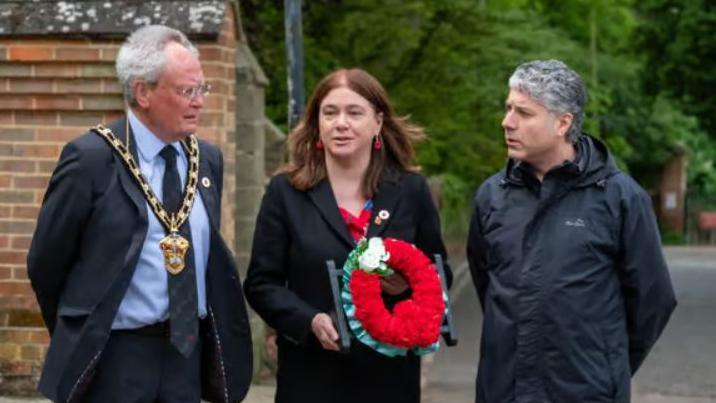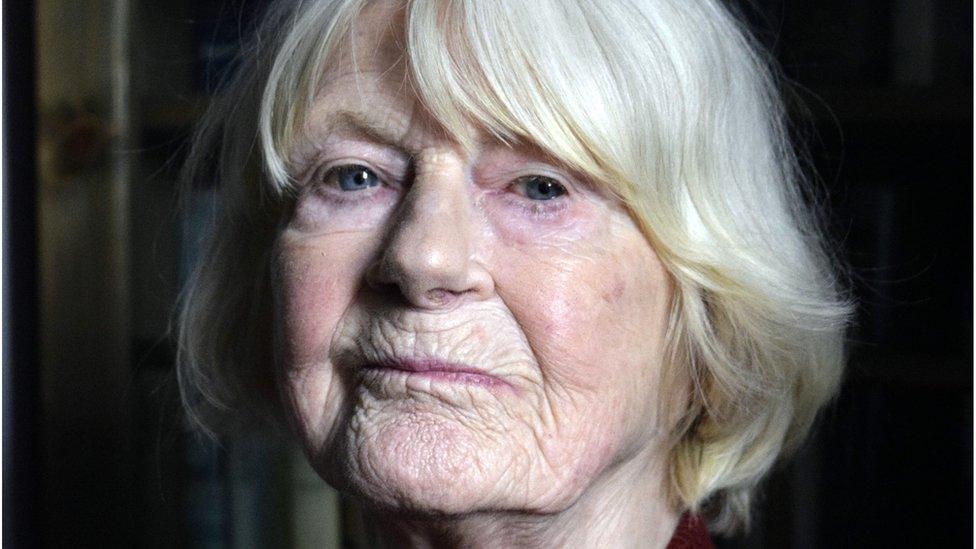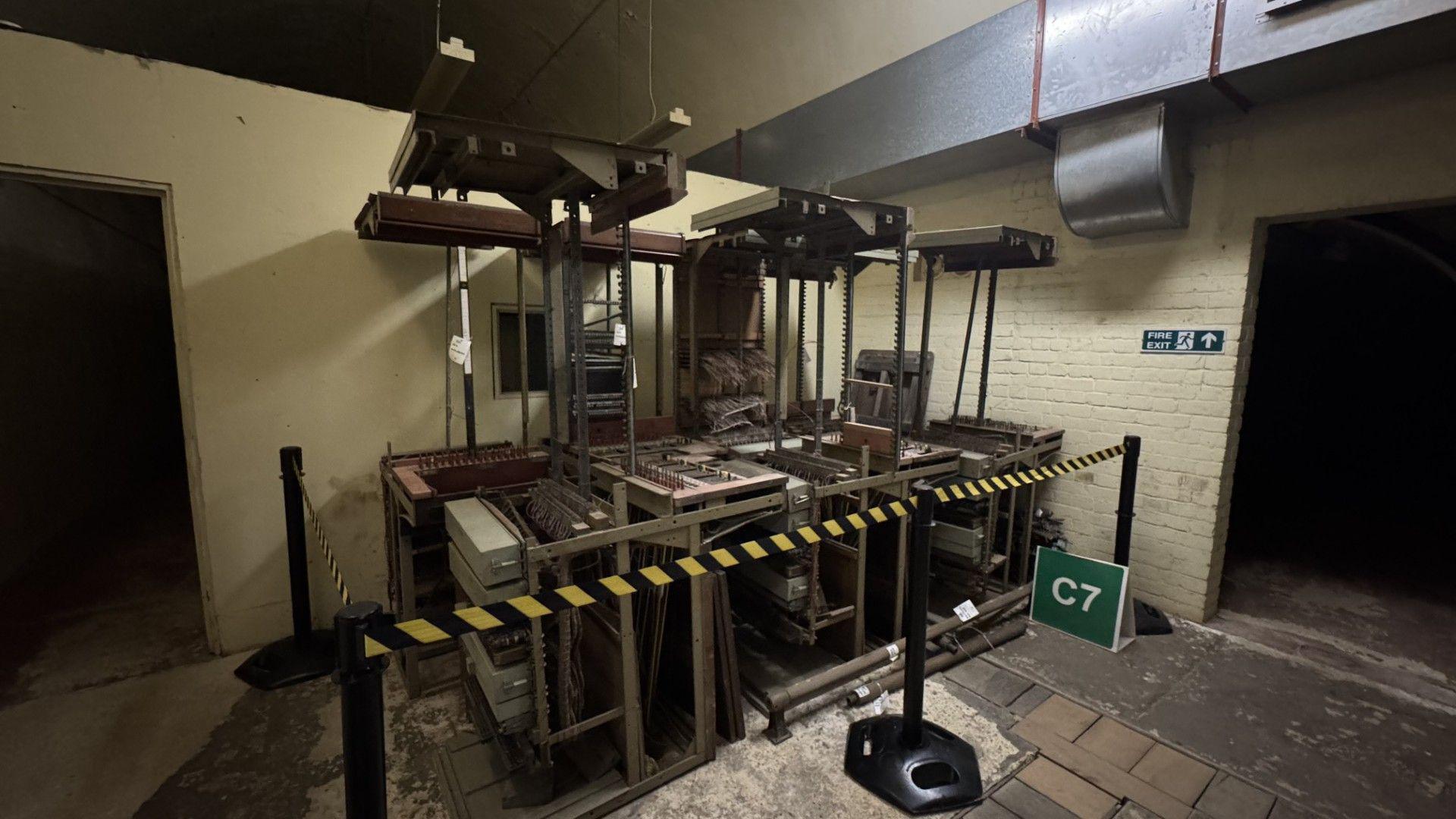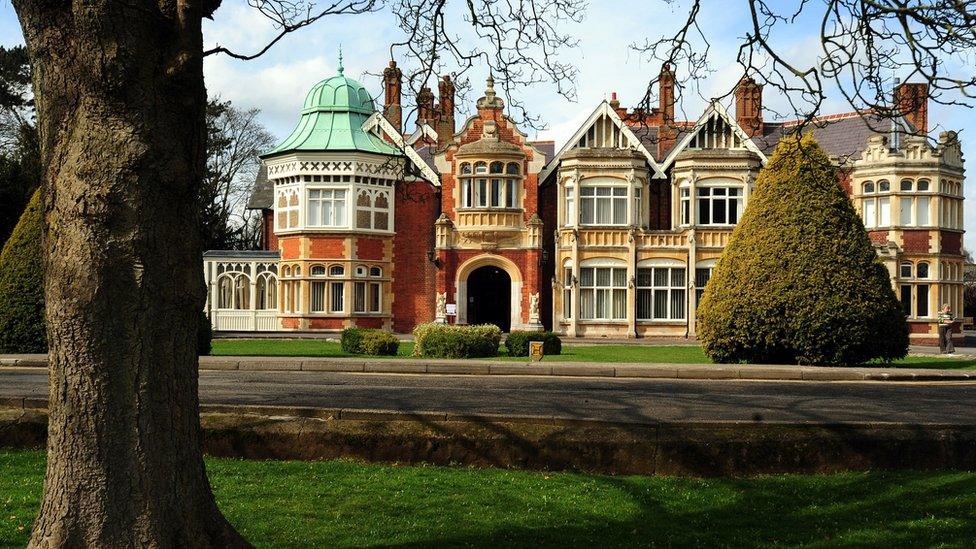Top-secret WW2 communications base women honoured

A huge military communications network was set up during World War Two
- Published
Women whose work at a top-secret communications base was said to have helped shorten World War Two are being honoured on Armistice Day.
The group were based in underground tunnels at Q Central near Leighton Buzzard in Bedfordshire.
Labour MP for Leighton Buzzard, Alex Mayer, has campaigned for a lasting memorial to them and will unveil a commemorative plaque on Tuesday.
A historian who has written about Q Central said he was "delighted" the women's efforts had finally been recognised.
There is no trace now of RAF Leighton Buzzard, but, in the 1940s, it was a hidden hive of activity.
More than 5,000 men and women operated more than 1,100 teleprinters, and it became known as the largest telephone exchange in the world.
The station had been chosen for its strategic location as it had good transport links, but there was no obvious military presence.

The code-breaking operation at Bletchley Park was an outstation of Q Central
The site was heavily camouflaged with green fabric to match the colour of the fields.
It coordinated operations in some of the decisive moments of the war, including the Battle of Britain and the D-Day landings.
Paul Brown, the author of The Secrets of Q Central - how Leighton Buzzard Shortened the Second World War, said: "It was absolutely vital in the survival of Britain and Europe,
"Bletchley Park was a mere outstation of Leighton Buzzard - all the top secret communications were operated from here."

Alex Mayer MP, pictured with Councillor David Bligh and LB First Chair Gennaro Borrelli, has campaigned for recognition for Q Central's personnel
Brown said that, when he started researching Q Central a decade ago, it was "a complete revelation to everybody in Leighton Buzzard that this organisation existed.
"When we wrote the book about it, it was a surprising success, and it's taken ten years for everybody to realise how important Leighton Buzzard was in the Second World War.
"So I'm absolutely delighted that, finally, these thousands of people have got the recognition they deserve."
Mayer said: "The women of Q Central were the backbone of Britain's wartime communications. Their quiet dedication and secrecy were instrumental in shortening the war and ultimately bringing peace to Europe."
The plaque will be unveiled at the town's war memorial outside All Saints Church.
The vital wartime base kept secret for decades
Q Central in Leighton Buzzard remained an official secret until 2013.
Get in touch
Do you have a story suggestion for Beds, Herts & Bucks?
Follow Beds, Herts and Bucks news on BBC Sounds, Facebook, external, Instagram, external and X, external.
Related topics
- Published6 September 2023

- Published18 May

- Published20 October 2020
